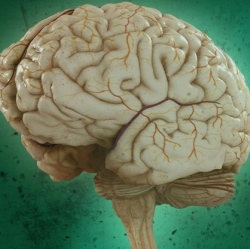
An interdisciplinary team led by has developed a technique to improve brain-controlled prostheses. These brain-computer-interface (BCI) devices, for people with neurological disease or spinal cord injury, deliver thought commands to devices such as virtual keypads, bypassing the damaged area.
The new technique addresses a problem with these brain-controlled prostheses: they currently access a sample of only a few hundred neurons, so tiny errors in the sample, neurons that fire too fast or too slow, reduce the precision and speed of thought-controlled keypads.
In essence the new prostheses analyze the neuron sample and quickly make dozens of corrective adjustments to the estimate of the brain’s electrical pattern. The technology is intended for people with paralysis and amyotrophic lateral sclerosis (ALS), also called Lou Gehrig’s disease, a condition that Stephen Hawking has. ALS degrades one’s ability to move.
The new corrective technique is based on a recently discovered understanding of how monkeys naturally perform arm movements. The researchers studied animals that were normal in every way. The monkeys used their arms, hands and fingers to reach for targets presented on a video screen.
The researchers sought to learn, through hundreds of experiments, what the electrical patterns from the 100- to 200-neuron sample looked like during a normal reach, to understand the “brain dynamics” underlying reaching arm movements.
“These brain dynamics are analogous to rules that characterize the interactions of the millions of neurons that control motions,” said Jonathan Kao, a doctoral student in electrical engineering and first author of the open-access Nature Communications paper on the research. “They enable us to use a tiny sample more precisely.”
The goal of all this research is to get thought-controlled prosthetics to people with ALS. Today these people may use an eye-tracking system to direct cursors or a “head mouse” that tracks the movement of the head. Both are fatiguing to use. Neither provides the natural and intuitive control of readings taken directly from the brain.
“Brain-controlled prostheses will lead to a substantial improvement in quality of life,” Shenoy said. “The speed and accuracy demonstrated in this prosthesis results from years of basic neuroscience research and from combining these scientific discoveries with the principled design of mathematical control algorithms.”
The U.S. Food and Drug Administration recently gave Shenoy’s team the green light to conduct a pilot clinical trial of their thought-controlled cursor on people with spinal cord injuries.
